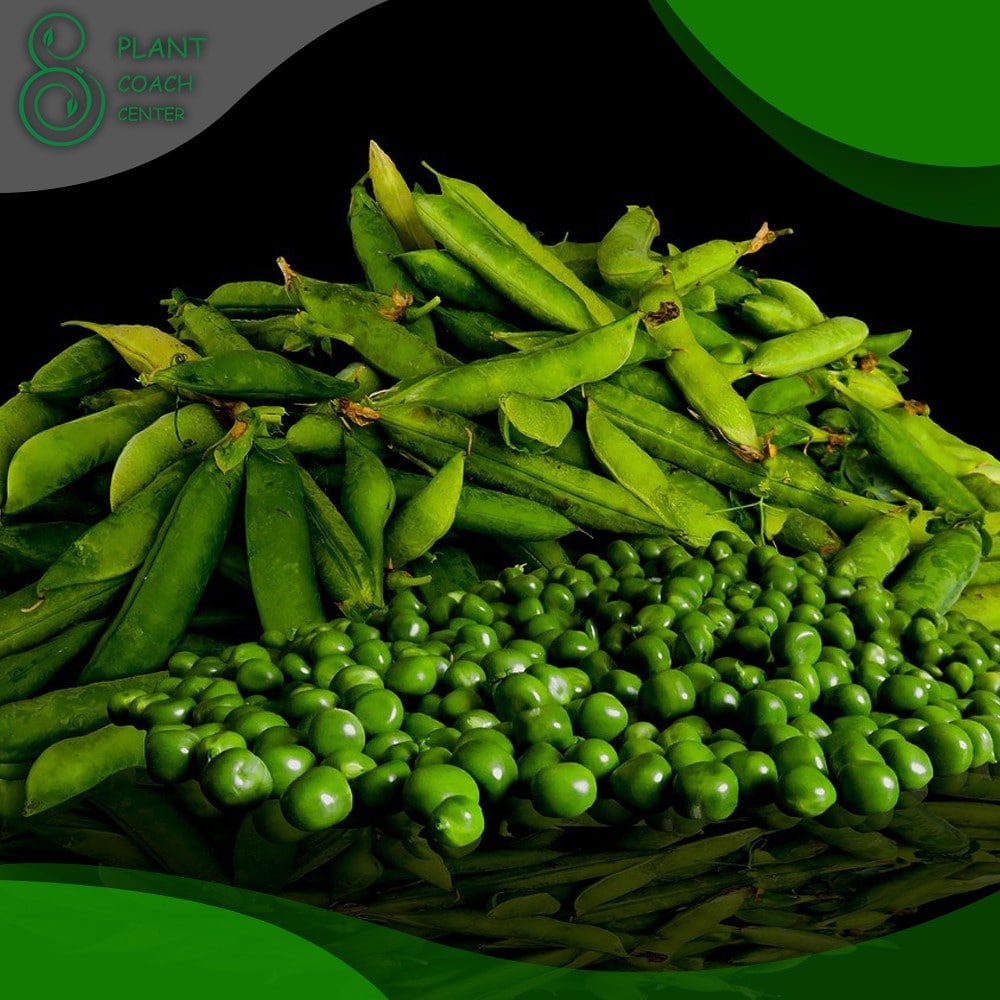Introduction to When to Plant Peas for Fall Harvest:
Fall harvesting presents a wonderful opportunity for gardeners to extend their growing season and enjoy a bountiful crop of fresh produce. In this comprehensive guide, we’ll explore the best practices and techniques for planting peas in the fall to ensure a successful harvest. Whether you’re a seasoned gardener or just starting, this article will provide you with valuable insights and tips on when to plant peas for a fall harvest.
- The Basics of Peas
Peas (Pisum sativum) are cool-season vegetables that belong to the legume family. They are not only delicious but also highly nutritious, rich in vitamins, minerals, and dietary fiber. Before diving into the specifics of fall planting, let’s familiarize ourselves with the basics of peas:
- Overview of Peas as a Cool-Season Crop
Peas thrive in cool weather conditions, making them an excellent choice for fall planting. They prefer temperatures between 55°F and 75°F (13°C-24°C) and can tolerate light frosts. By understanding their growth habits and requirements, you can maximize your chances of a successful fall harvest.
- Popular Pea Varieties for Fall Planting
When selecting pea varieties for fall planting, it’s essential to choose those with shorter maturity dates and good cold tolerance. Some popular options for fall peas include ‘Sugar Ann,’ ‘Little Marvel,’ ‘Maestro,’ and ‘Oregon Sugar Pod.’ These varieties are known for their ability to produce a good yield within a shorter time frame.
- Nutritional Benefits of Peas
Peas are not only a tasty addition to meals but also offer numerous health benefits. They are an excellent source of vitamins A, C, and K, as well as dietary fiber and essential minerals like iron and potassium. Incorporating peas into your fall harvest can contribute to a well-rounded and nutritious diet.
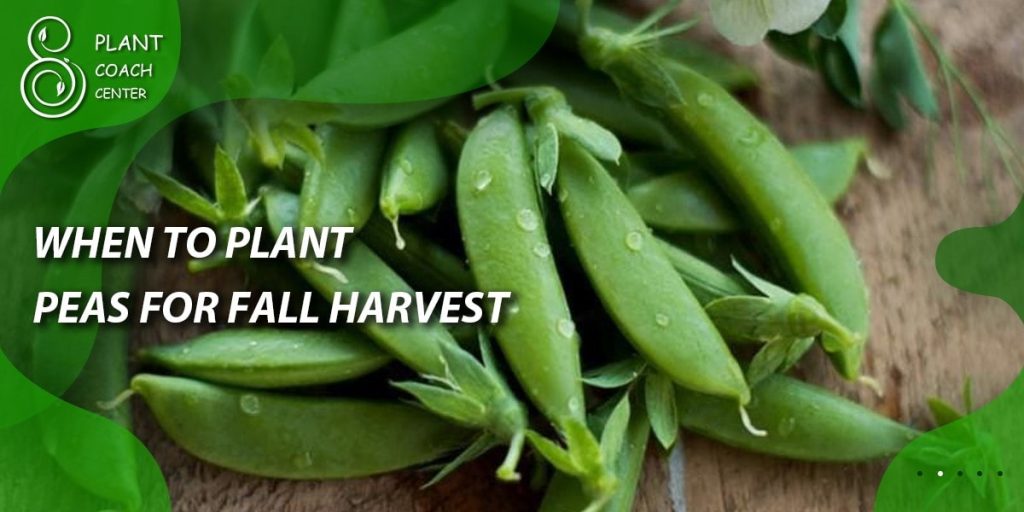
Factors Influencing Fall Planting of Peas
Several factors come into play when determining the ideal time to plant peas for a fall harvest. These factors include climate and hardiness zones, frost dates, and soil conditions. Let’s explore each of these factors in more detail:
- Climate and Hardiness Zones
Peas have different temperature requirements for optimal growth. Understanding your specific hardiness zone and local climate conditions will help you determine the suitable time to plant peas in the fall. Consult your local agricultural extension office or refer to hardiness zone maps to identify your zone and guide your planting decisions.
- Understanding Frost Dates and Average Temperatures
Frost dates play a crucial role in fall planting. Peas can tolerate light frosts, but exposure to severe frost can damage or kill the plants. Determine the average first frost date in your area and count backward to estimate the ideal planting time. Additionally, consider the average temperatures during the fall season to ensure the optimal conditions for pea growth.
- Soil Conditions and Preparation for Peas
Peas thrive in well-drained soil that is rich in organic matter. Before planting, prepare the soil by removing weeds, rocks, and debris. Incorporate compost or well-rotted manure to improve soil fertility and drainage. Conduct a soil pH test and adjust it to the recommended range of 6.0 to 7.0 for healthy pea growth.
Planning and Preparation
To ensure a successful fall harvest of peas, proper planning and preparation are essential. Let’s delve into the key aspects of planning and preparing for your fall pea planting:
- Determining the Ideal Planting Time for Your Region
Timing is crucial when it comes to fall planting of peas. The ideal planting time varies depending on your location and climate. Research local gardening resources, consult experienced gardeners in your area, or refer to planting calendars specific to your region to determine the optimal planting window for fall peas.
- Calculating Backwards from the First Frost Date
Once you identify the average date of the first frost in your area, it’s important to count backwards to determine the appropriate planting date for your peas. Consider the specific maturity period of the pea variety you’ve chosen and allow sufficient time for the plants to reach maturity before the frost arrives.
- Assessing Your Garden Space and Layout
Before planting peas, assess your garden space and layout. Ensure that the chosen area receives full sun exposure, as peas thrive in bright sunlight. Additionally, allocate enough space for the plants to grow and provide appropriate support structures such as trellises or stakes to promote healthy vine growth.

Starting Seeds Indoors
Starting pea seeds indoors can give you a head start and allow for earlier planting in the fall. Here’s what you need to know about starting pea seeds indoors:
- Benefits of Starting Pea Seeds Indoors
Starting pea seeds indoors provides several advantages. It extends the growing season, increases control over growing conditions, and allows for earlier harvests. It is particularly useful in areas with shorter growing seasons or when you want to maximize the yield of your fall harvest.
- Choosing the Right Containers, Soil, and Light Conditions
When starting pea seeds indoors, select containers with adequate drainage holes and use a well-draining potting mix. Sow the seeds at the recommended depth, usually around 1 inch (2.5 cm), and maintain consistent moisture levels. Place the containers in a location that receives ample sunlight or use supplemental grow lights to provide sufficient light for seedling growth.
- Transplanting Seedlings Outdoors
Once the seedlings have developed a few sets of true leaves and the risk of frost has passed, it’s time to transplant them outdoors. Harden off the seedlings gradually by exposing them to outdoor conditions for increasing durations over the course of a week. Choose a cloudy or overcast day for transplanting to minimize stress on the delicate seedlings.
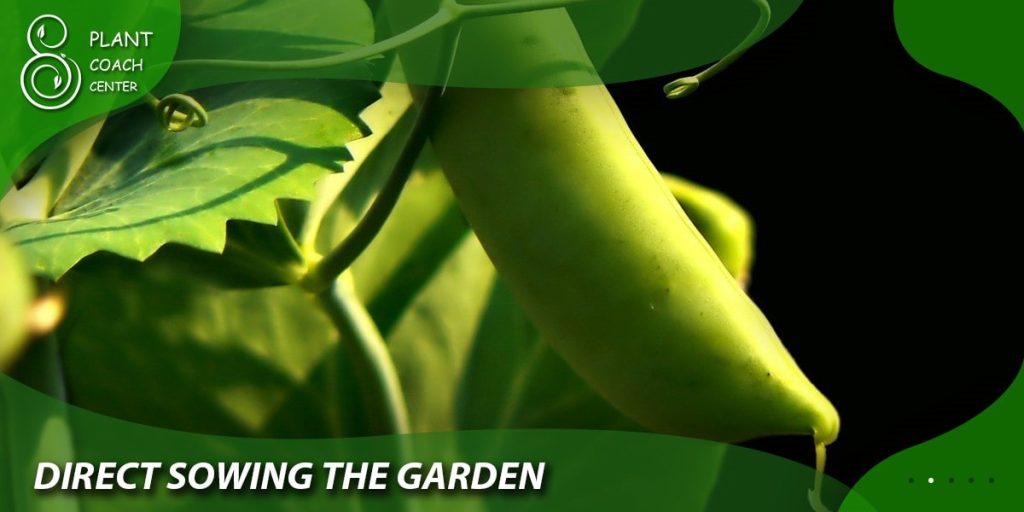
Direct Sowing in the Garden
Direct sowing is another viable method for planting peas in the fall. Here’s what you need to consider for successful direct sowing:
- Preparing the Soil for Direct Sowing
Before direct sowing peas in your garden, prepare the soil properly. Remove any weeds, rocks, or debris that may hinder the growth of your pea plants. Loosen the soil to a depth of at least 6 inches (15 cm) to facilitate root development and ensure good drainage.
- Proper Seed Spacing and Planting Depth
When direct sowing peas, it’s important to follow the recommended seed spacing and planting depth for optimal growth. Place the seeds approximately 1 to 2 inches (2.5 to 5 cm) deep in the soil, spacing them according to the guidelines provided on the seed packet or as recommended for your chosen pea variety.
- Providing Support for Pea Plants
Pea plants are climbers and require support to thrive. Install trellises, stakes, or other support structures near the planting area before sowing the seeds. This will allow the pea vines to climb and prevent them from sprawling on the ground, improving air circulation and reducing the risk of disease.
Extending the Growing Season
To maximize your fall pea harvest, it’s beneficial to employ strategies that extend the growing season. Here are a few methods to consider:
- Using Row Covers and Season Extenders
Row covers and season extenders, such as cold frames or hoop tunnels, can help protect your pea plants from early frosts and extend the growing season. These structures provide additional insulation, trapping heat and protecting the plants from temperature fluctuations. They can be especially useful in regions with shorter fall seasons or colder climates.
- Cold Frames and Greenhouses for Fall Pea Production
If you have access to a cold frame or greenhouse, you can create an ideal environment for fall pea production. These structures offer protection from harsh weather conditions and allow you to control temperature, humidity, and light exposure. Consider utilizing these options to enhance your fall pea harvest.
- Succession Planting for Continuous Harvest
Implementing succession planting techniques ensures a continuous supply of fresh peas throughout the fall season. Instead of sowing all your pea seeds at once, stagger the plantings by sowing new seeds every 2 to 3 weeks. This way, you’ll have a steady stream of maturepea plants ready for harvest, providing you with a prolonged yield.
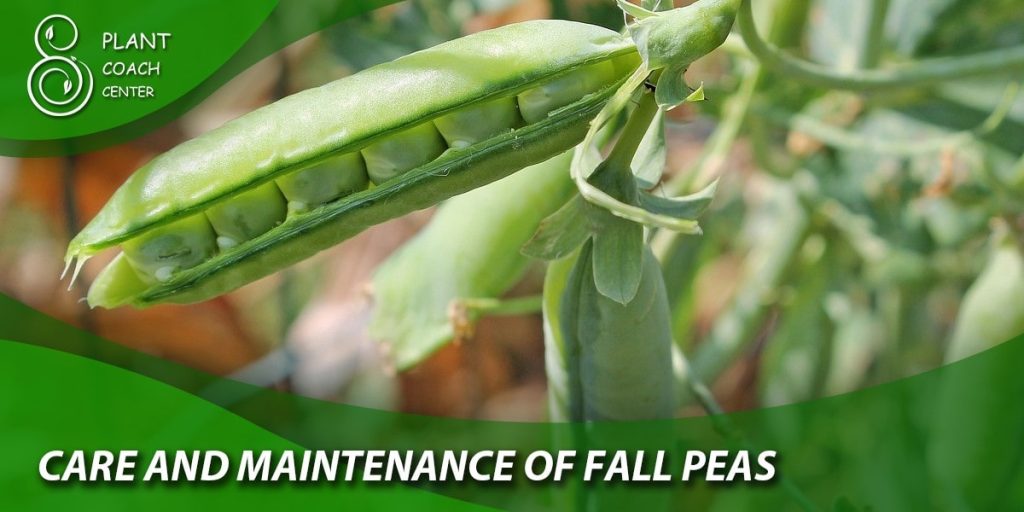
Care and Maintenance of Fall Peas
To cultivate healthy and productive fall peas, it’s important to provide proper care and maintenance. Here are some essential practices to follow:
- Watering and Moisture Requirements
Peas require consistent moisture, especially during flowering and pod development. Ensure that your plants receive sufficient water, aiming for about 1 inch (2.5 cm) of water per week. Monitor the soil moisture levels regularly and adjust watering accordingly, keeping in mind that overwatering can lead to root rot.
- Mulching for Moisture Retention
Applying a layer of organic mulch around your pea plants helps retain moisture in the soil, reduces weed growth, and regulates soil temperature. Use materials like straw, shredded leaves, or compost to create a mulch layer of about 2 to 3 inches (5 to 7.5 cm) around the base of the plants, taking care not to cover the emerging seedlings.
- Supporting Pea Vines as They Grow
As your pea plants grow, they will develop tendrils and start climbing. It’s crucial to provide support for the vines to prevent them from falling or tangling. Regularly check the progress of your plants and gently guide the vines towards the support structure, ensuring they have a secure and stable structure to climb.
- Pest and Disease Management
While peas are relatively resilient, they can still be susceptible to certain pests and diseases. Keep an eye out for common pests like aphids, slugs, and snails, and take appropriate measures such as handpicking or using organic pest control methods if necessary. Additionally, practicing crop rotation and maintaining good garden hygiene can help prevent the spread of diseases.
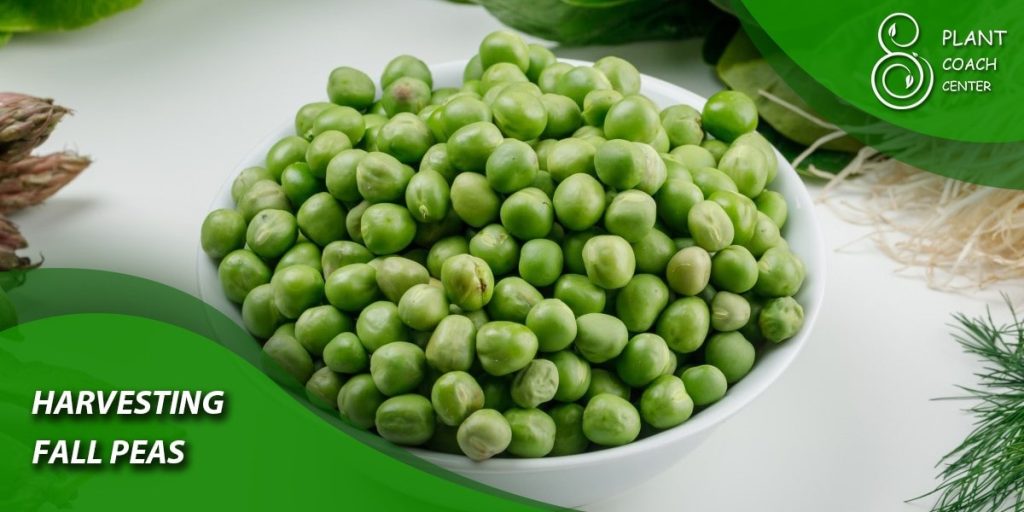
Harvesting Fall Peas
The moment you’ve been patiently waiting for has arrived—the time to harvest your fall peas. Here’s how to determine when and how to harvest your peas:
- Checking for Maturity
Peas are ready for harvest when the pods are plump, firm, and filled with fully developed peas. The ideal harvest time varies depending on the variety, but it generally ranges from 60 to 70 days after planting. Regularly inspect your plants and start harvesting when the pods have reached the desired size and color.
- Harvesting Techniques
To harvest peas, hold the vine with one hand and use the other hand to gently pull the pod away from the plant. Be careful not to damage the vine or surrounding foliage. Harvest the pods as they mature, aiming for a continuous harvest throughout the fall season. Remember that peas lose their sweetness rapidly after harvest, so it’s best to consume them as soon as possible for the freshest flavor.
- Saving Seeds for Future Planting
If you’re interested in saving pea seeds for future planting, allow some pods to fully mature and dry on the vine. Once the pods are dry and brittle, remove the peas and store them in a cool, dry place in airtight containers. Label the containers with the variety and date of collection for easy reference.
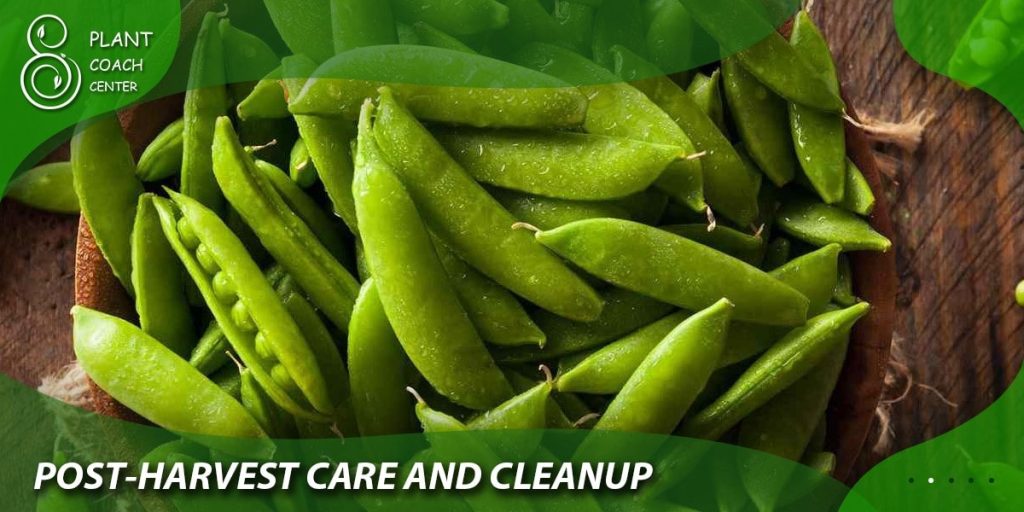
Post-Harvest Care and Cleanup
After harvesting your fall peas, it’s important to take care of your garden and prepare it for the next growing season. Here are some post-harvest care and cleanup tasks to consider:
- Removing Spent Pea Plants
Once you have harvested all the peas, remove the spent pea plants from the garden bed. Pull the plants out by the roots and discard them in a compost pile or dispose of them properly. Removing the plants helps prevent the buildup of pests and diseases and prepares the soil for future plantings.
- Adding Organic Matter and Fertilizing
To replenish the soil’s nutrients and improve its structure, add organic matter to the garden bed. Incorporate compost, well-rotted manure, or other organic amendments into the soil. This will help enrich the soil and promote healthy growth for the next crop. If necessary, you can also apply a balanced organic fertilizer according to the manufacturer’s instructions.
- Mulching for Winter Protection
Before the onset of winter, consider adding a layer of mulch to protect the soil and provide insulation. Mulching helps prevent soil erosion, suppresses weed growth, and regulates soil temperature during the colder months. Apply a layer of mulch, such as straw or shredded leaves, to a depth of 2 to 3 inches (5 to 7.5 cm) around the garden bed.
- Cleaning and Storing Garden Tools
After completing your fall pea harvest and garden cleanup, it’s a good idea to clean and store your garden tools properly. Remove any dirt or debris from the tools and wash them with water and a mild detergent if necessary. Dry the tools thoroughly to prevent rusting, and consider applying a thin coat of oil to protect the metal parts. Store the tools in a dry, sheltered area to keep them in good condition for future use.
Reflecting and Planning for the Next Season
As you wrap up your fall pea harvest, take some time to reflect on your gardening experience and make notes for future reference. Consider the following points:
- Evaluate Your Fall Pea Crop
Assess the success of your fall pea crop and note any challenges or issues you encountered. Reflect on the variety you chose, the timing of planting, and the overall yield. This evaluation will help you make informed decisions and adjustments for future fall pea plantings.
- Crop Rotation and Succession Planning
Crop rotation is an essential practice for maintaining soil health and preventing the buildup of pests and diseases. Plan your garden layout for the next season, ensuring that you rotate your pea plants to a different area. Additionally, incorporate succession planting techniques to maximize your harvest and extend the growing season.
- Research and Learn
Gardening is a continuous learning process, and there’s always more to discover. Take the time to research new pea varieties, pest and disease management techniques, and innovative gardening practices. Stay updated with gardening resources, join local gardening communities, and engage with fellow gardeners to expand your knowledge and enhance your gardening skills.
Conclusion
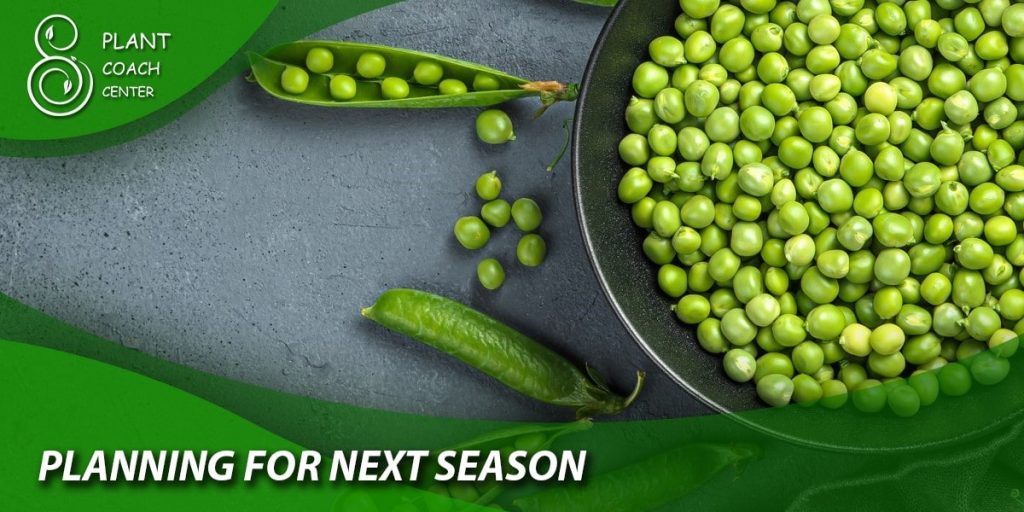
Planting peas for a fall harvest can be a rewarding and productive endeavor. By understanding the specific requirements, proper timing, and cultivation techniques, you can enjoy a bountiful harvest of fresh peas even as the weather begins to cool.
Remember to plan ahead, prepare your garden properly, and provide the necessary care and maintenance throughout the growing season. With these steps, you’ll be well on your way to a successful fall pea harvest year after year.
Happy gardening and enjoy your delicious homegrown peas!


